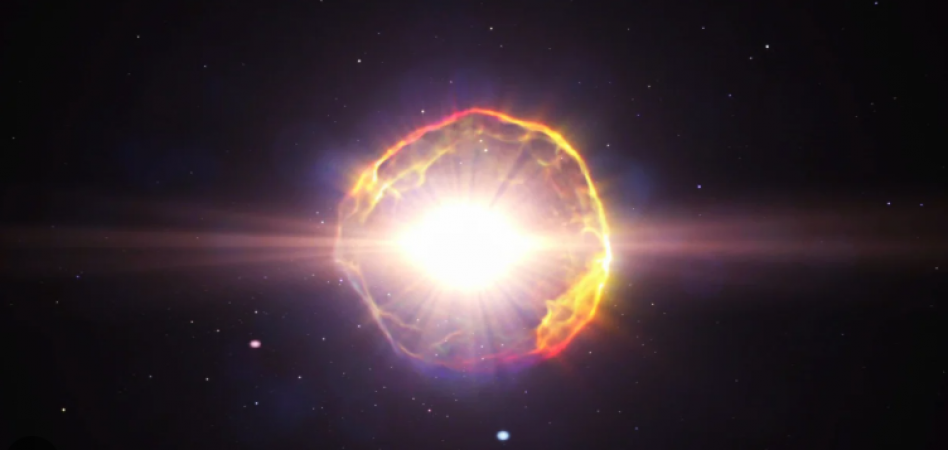
USA: Using information from the James Webb Space Telescope's first year of interstellar observations, an international team of scientists discovered an exploding supernova in a distant spiral galaxy.
One of the brightest galaxies in our local universe, known as the Spanish Dancer, NGC 1566, has recently undergone new infrared measurements for research published in The Astrophysical Journal Letters. The highly active center of the galaxy, which lies about 40 million miles from Earth, has attracted the attention of many researchers who are interested in the formation and evolution of star-forming nebulae.
In this case the explosion of a carbon-oxygen white dwarf star, known as a Type 1a supernova, was observed by astronomers. Michael Tucker, a fellow at the Center for Cosmology and Astroparticle Physics at The Ohio State University and co-author of the study, said the researchers discovered the supernova by accident while looking at NGC 1566.
Also Read: Saudi Arabia and other Arab countries are crucial allies in the fight against climate change
According to Tucker, astronomers often use white dwarf explosions as an indicator of distance, so they are important in the field of cosmology. They also generate a significant portion of the universe's iron group elements, including nickel, cobalt and iron.
The PHANGS-JWST survey, which was used to create a reference dataset to study nearby galaxies, made the study possible thanks to a comprehensive archive of star cluster measurements.
To better understand how specific chemical elements are released into the surrounding universe after the explosion, Tucker and co-author Nes Maykar Chen, an astronomy graduate student at Ohio State, led the study, Supernova examined images taken from the core of
For example, whereas lighter elements such as hydrogen and helium were created during the Big Bang, heavier elements can only be produced through thermonuclear reactions occurring inside supernovae. According to Tucker, knowing how these stellar reactions affect the distribution of iron elements throughout the universe could help scientists understand the chemistry behind the chemical formation of the universe.
Also Read: Bangalore: Amit Shah opens command centre under Safe City project
We can essentially see different layers of ejecta as the supernova expands, and this allows us to probe the core of the nebula, the scientist explained. Supernovae produce radioactive high-energy photons as a result of a process known as radioactive decay, in which an unstable atom releases energy to become more stable. In this case, the study focused specifically on the cobalt-56 to iron-56 transition.
The researchers found that more than 200 days after the initial event, the supernova ejecta was still visible at infrared wavelengths, which are impossible to image from the ground using data from JWST's near-infrared and mid-infrared camera instruments Would.
Also Read: TikTok's share of US adults' screen time approaches Netflix
"This is one of those studies where it really would have been a matter of concern if our results were not what we expected," he said. A theory," said the researcher.